Private Flying Lesson: Your Complete Beginner’s Guide
May 15, 2025
Ready to learn to fly and take to the skies? A private flying lesson provides personalized, one-on-one training with a certified flight instructor.
You’ll learn the basics of flying at your own pace. This guide walks you through what to expect, the benefits, and how to get started.
Key Takeaways
-
Private flying lessons are tailored instruction from certified flight instructors covering all aspects of flying so students become proficient pilots. These lessons can be tailored to meet your specific aviation goals, whether for personal enjoyment or professional advancement.
-
A discovery flight is the first step for anyone wanting to become a pilot, a hands-on experience to see if flying is something you want to pursue before committing to training.
-
Choosing the right flight school makes a big difference in training so consider instructor qualifications, aircraft condition and student reviews to ensure a good learning environment.
What is a Private Flying Lesson?
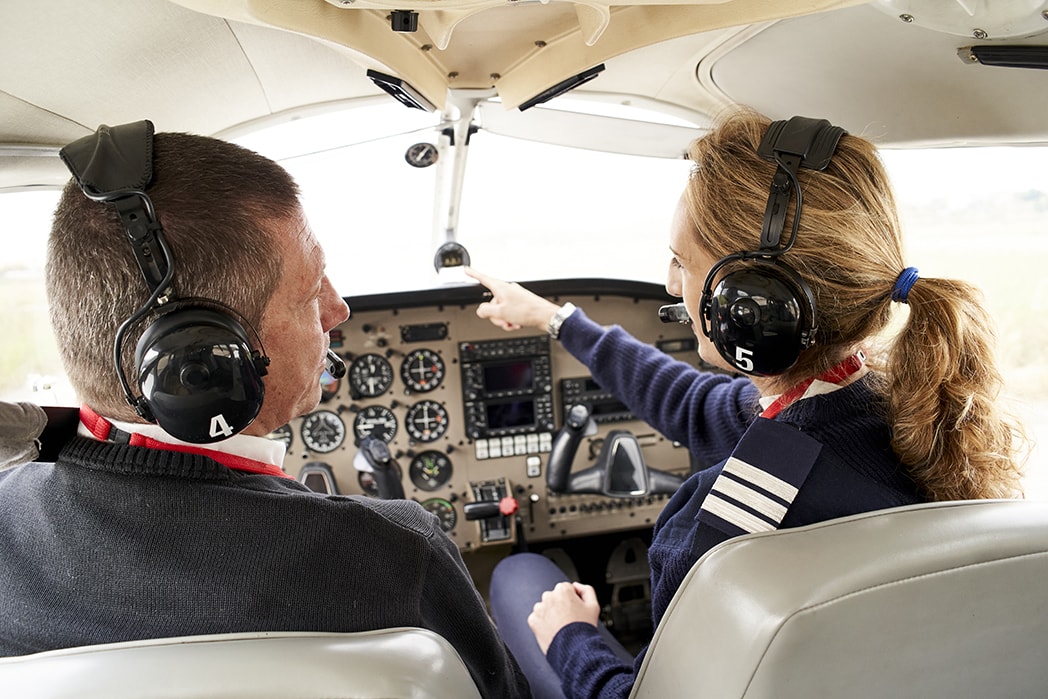
Private flight lessons are one-on-one training sessions with a certified flight instructor where student and instructor will cover the basics of flying. These lessons are tailored to your learning style and pace, so you understand everything before moving on.
The course material will cover all aspects of flight training from basic maneuvers to advanced techniques, so you are proficient to fly.
During these private lessons, hands-on instruction in an actual aircraft gives you the practical knowledge you need to be proficient in aviation. Each lesson builds on your skills and confidence flying an airplane.
Whether your goal is to get an FAA private pilot certificate or become a professional pilot, private pilots’ lessons lay the foundation for your journey into aviation, and they are often the first step toward a professional pilot career, helping you earn your student pilot certificate.
The Importance of a Discovery Flight

The first step in the aviation journey is the discovery flight, the first lesson for anyone who wants to become a pilot. This first flight is crucial to the whole training experience as it gives you a real taste of flying an aircraft. This introductory flight lesson is where you will start flying and get a real feel for what it’s like to be a pilot.
As you go on this adventure you’ll be flying the plane yourself under the supervision of your instructor and get to feel the thrill of flying yourself. It’s a preview to see if pursuing education through a full pilot training program is for you.
You may feel a bit nervous on this first flight. Relaxation will help you enjoy it more. Rest assured your instructor is with you every step of the way, supporting you and prioritizing safety and comfort.
More than just teaching basic flying skills, this first flight ignites the passion for all things aviation and lays the foundation for future lessons. It’s during this experience that many future pilots decide to commit to ongoing flight lessons and formal training.
The first flight is not just exciting exposure but a fundamental step towards achieving your dream of flying in your broader aviation journey and it’s often where your journey into private pilot flight training truly begins.
Choosing the Right Flight School
Choosing the right flight school is key to a great training experience. You want to assess the experience and qualifications of the instructors who will be teaching you and will impact your flying abilities. Look at the maintenance of the school and the range of aircraft available to ensure safety and comprehensive training programs.
Firsthand testimonials and success stories are the best way to measure a flight school’s reputation and quality. These personal experiences give you a measure of teaching effectiveness and learner satisfaction indicators that will tell you if you will be learning in a supportive environment that will produce great results.
The location of your chosen school is also important. Choosing one close to you means you can do regular practice sessions and get exposed to different weather conditions, hone your flying skills and be ready for any situation.
If you're looking to start flying lessons USA, these factors will help you choose a flight academy that matches your goals and will get you through the FAA private pilot test.
Ground School and Preparation
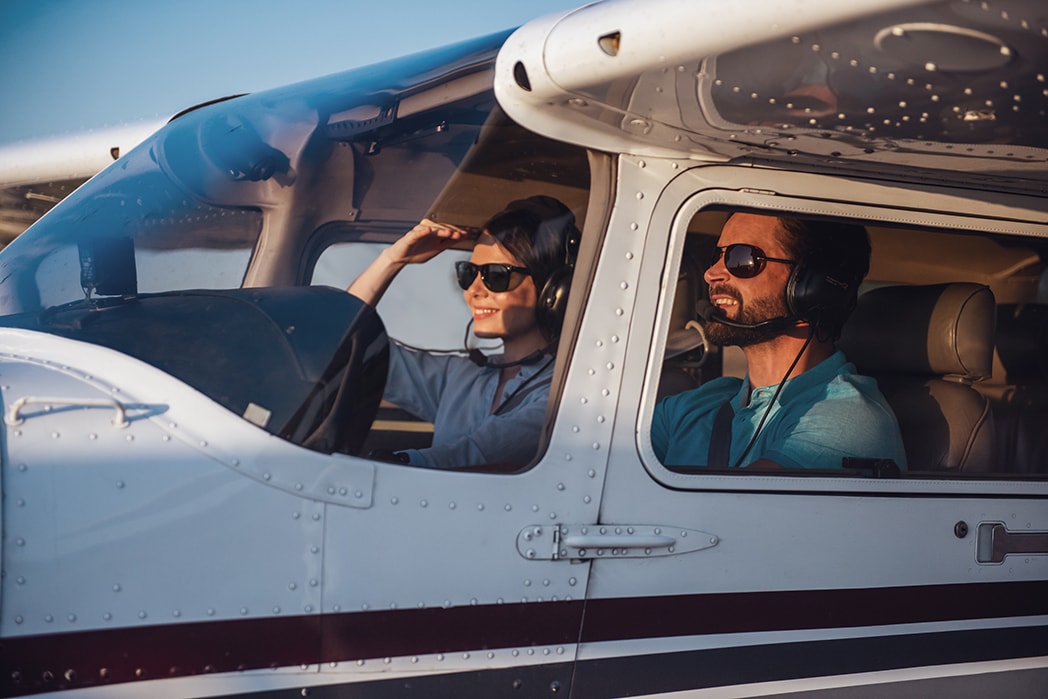
Ground school is a big part of private pilot training and provides the foundation of knowledge you need to be successful in-flight training. Many students opt for online ground school courses like those offered by Flight Nerd Air Force, which offer flexibility and convenience.
These courses cover a lot of topics including airport operations, aeronautical decision making, radio communications, basic aerodynamics and weather theory.
By choosing Flight Nerd Air Force, students gain access to a modern, student-focused curriculum designed to complement hands-on training with certified instructors, making it easier to transition smoothly into in-air practice.
Completing ground school prepares you for the FAA private pilot test so you have a solid understanding of the theoretical side of flying. This is critical to success in flight training as it gives you the knowledge to make informed decisions and fly an aircraft safely.
By investing time in ground school, you set yourself up for a smooth journey through your private pilot training.
Preparing for Your First Private Flying Lesson
To make the most of your first lesson wear something comfortable as the cockpit can get hot. Light and airy fabrics and no tight clothing to keep you comfortable and focused during the lesson.
Bring a valid government issued ID like a passport or drivers licence so staff can confirm your identity. Having the right documents makes for a smooth start to your lesson.
Psychologically prepare yourself by being open minded and ready to learn when you start learning to fly. Your instructor will go through the basics and be there to answer any questions so we can set you up for your future in flying airplanes.
What to Expect During Your Private Flying Lesson

Before we start your flight lesson, we need to have perfect weather with clear skies and good visibility. Your instructor will do a pre-flight briefing that will go over the day’s plan and go over all the elements of flying, such as the maneuvers we will be doing, emergency procedures and weather theory.
Performing a thorough pre-flight check on the aircraft before you fly is crucial for a safe flight and helps you make the most of your flight time. You will be trained to follow checklists when inspecting the plane before we depart.
The actual flying lesson will involve taxiing on the runway, climbing into the air and doing basic maneuvers under supervision. Instructors will guide you during your first attempts at taking off and landing by having you do these with assistance.
As a pilot in training, it’s important for you to maintain airspeed because speeds below or above certain thresholds can stall the plane or damage it.
After your session airborne we will have an evaluation discussion with your instructor where they will go over how you did during the practice and give you feedback on what you need to work on this method builds both competence and confidence in your flying skills.
Key Skills Learned in Private Flying Lessons
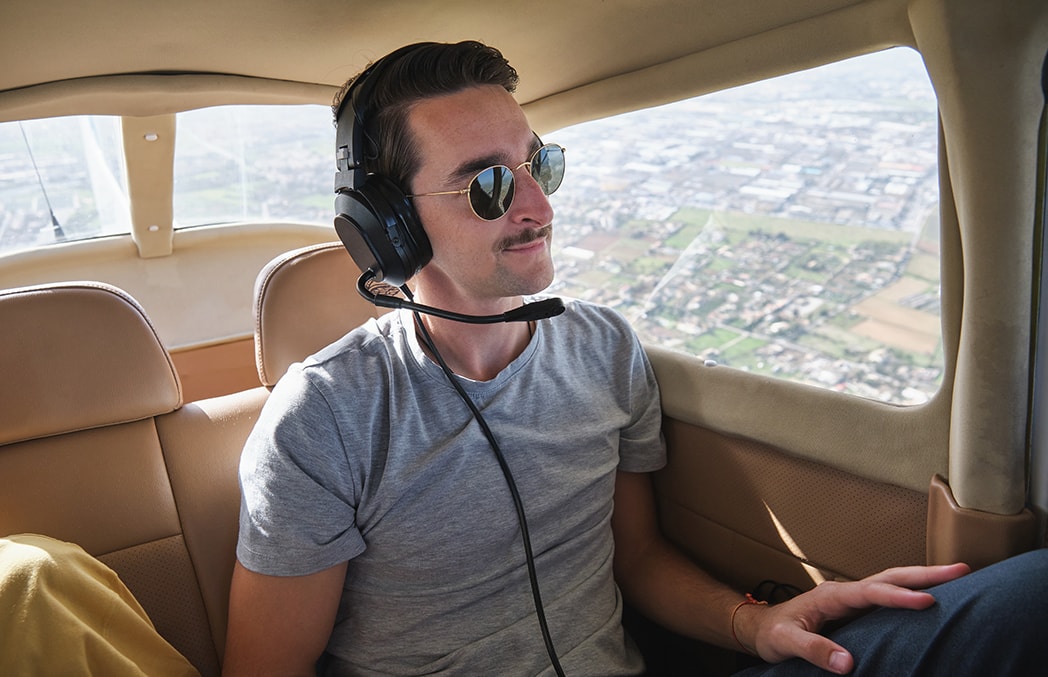
-
Basic Aerodynamic Principles: Learn about lift, weight, thrust, and drag, which are essential for controlling and flying the aircraft safely.
-
Aircraft Controls and Cockpit Instruments: Gain a foundational understanding of the controls and instruments during your first flight.
-
Radio Communications: Master the use of standard aviation terminology to communicate effectively with air traffic controllers, enhancing safety and efficiency.
-
Visual Flight Rules (VFR) Navigation: Learn to navigate using aeronautical charts and recognize landmarks for informed decision-making.
-
Weather Understanding: Develop the ability to interpret different weather conditions and respond accordingly during flights.
-
Engine Checks: Perform routine engine checks to detect potential issues early, ensuring the safety and reliability of your flights.
-
Knowledge Areas: Master the theoretical subjects covered in ground school, such as navigation, weather, and aircraft systems.
These skills form the foundation for safe flying and will support your future aviation adventures.
Cross Country Flight Training
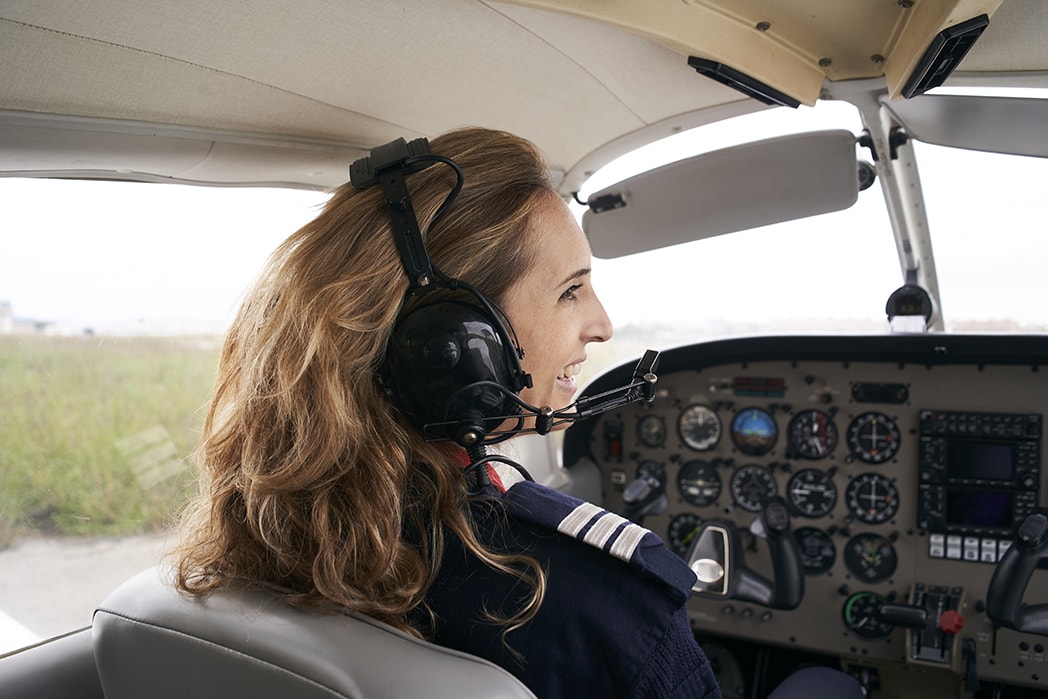
Cross country flight training is an exciting and challenging phase of private pilot training. During these flights, students learn to navigate and fly to different airports, using a variety of techniques and instruments. This type of training is essential for developing the skills and confidence needed to become a proficient and safe pilot.
With the guidance of a certified flight instructor, students learn to plan and execute cross country flights, honing their navigation skills and gaining valuable flight hours.
This experience is crucial for building the competence required to handle longer and more complex flights. Cross country flight training not only enhances a student’s flying abilities but also prepares them for the diverse challenges they may encounter as a private pilot.
Progression from Private Flying Lessons to Solo Flight
Becoming a private pilot starts with learning the basics and showing your instructor, you have completed them. Before you can fly an aircraft solo you need to complete some ground school requirements and prove you can fly the aircraft without help.
When you take control of an aircraft for the first time solo it’s a big moment in your training. It’s the start of solo flying. After this milestone more complex exercises await – you’ll be doing more complex maneuvers and longer cross-country flights.
This increase in responsibility and skill will not only build your confidence but also get you closer to meeting all the requirements for a private pilot certificate.
Cost of Private Flying Lessons
Understanding the cost of flight training is key for private pilot students. To get a private pilot license, you need to complete a certain amount of flight and ground hours. Approximately half of the cost is for renting an aircraft; standard aircraft are cheaper than those with all the bells and whistles. The cost of obtaining a private pilot license can vary, but it is generally in line with the national average for flight training expenses.
According to the 2025 Redbird Migration Flight Training Survey, the median cost for a private pilot certificate is around $14,000, with completion times averaging approximately six months.
Additional costs include ground school training (approximately $350), FAA medical certificates (around $125), and FAA written and practical test fees ($175 and $650, respectively).
To reduce costs, using simulators can be beneficial as you can practice without the higher costs of actual flying.
Training 2 to 3 times a week can help you progress faster and reduce the need for recurrent training, which can get costly over time. Owning an aircraft and then leasing it back can also be a way for students to reduce their financial burden during training by earning some income from the asset.
Understanding these cost factors will help you as a prospective pilot not only save money but also manage your budget throughout your journey to obtain a private pilot license.
Benefits of Private Flying Lessons
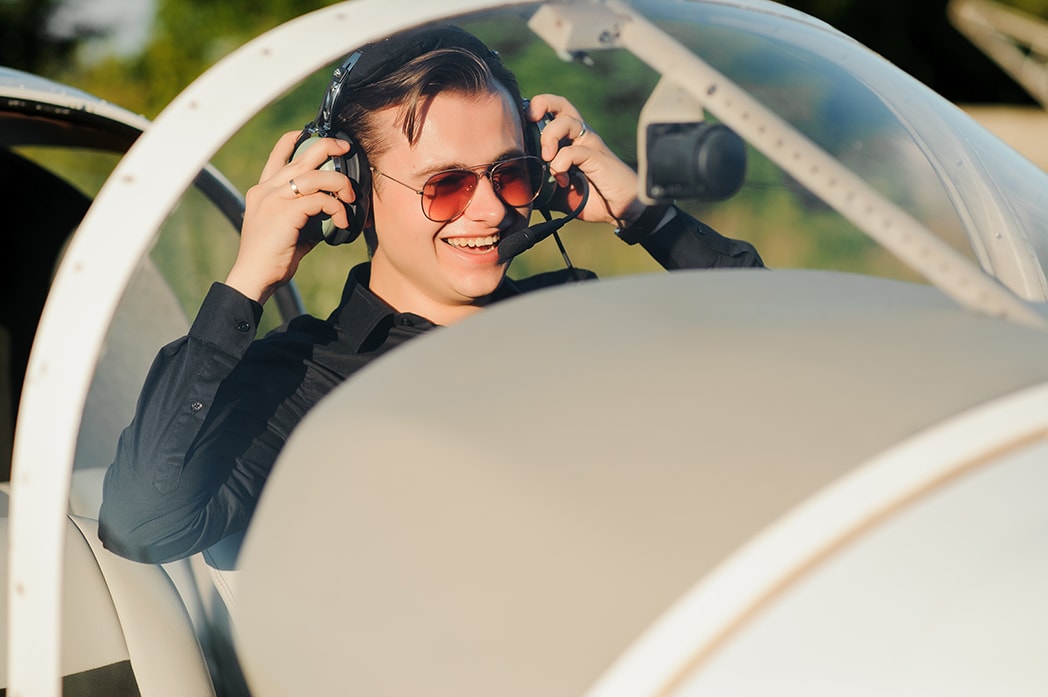
Private flight training means you get one on one training tailored to your goals, with the full attention of an instructor.
This bespoke approach helps you understand and remember aviation principles better because of the tailored teaching methods and you get the support you need to succeed, whether you aim to become a private pilot or a commercial pilot.
Private flying lessons are flexible and can fit into your schedule, so you can progress at your own pace. The one-on-one environment means instant feedback from instructors, helping you refine your flying techniques and build confidence.
Doing private lessons means more actual flying time than traditional flight schools, so you get to your private pilot credentials faster.
Advanced Training Opportunities
Once you have your private pilot license, you have many advanced training options open to you. Getting an instrument rating is one of them. This requires passing a written exam and a practical test to prove your knowledge. This qualification allows you to fly in all weather conditions and increases your overall flying ability, meeting the necessary completion standards.
Getting a multi engine rating allows you to fly bigger and faster planes. The training for this rating involves learning about complex aircraft systems and how to manage multiple engines. If you want to become an airline pilot, getting the multi engine rating is essential as most commercial airliners have multiple engines.
Upgrading your qualifications with these ratings will make you more attractive to employers and open up more career paths in the aviation industry.
Encouragement to Start with Ground School
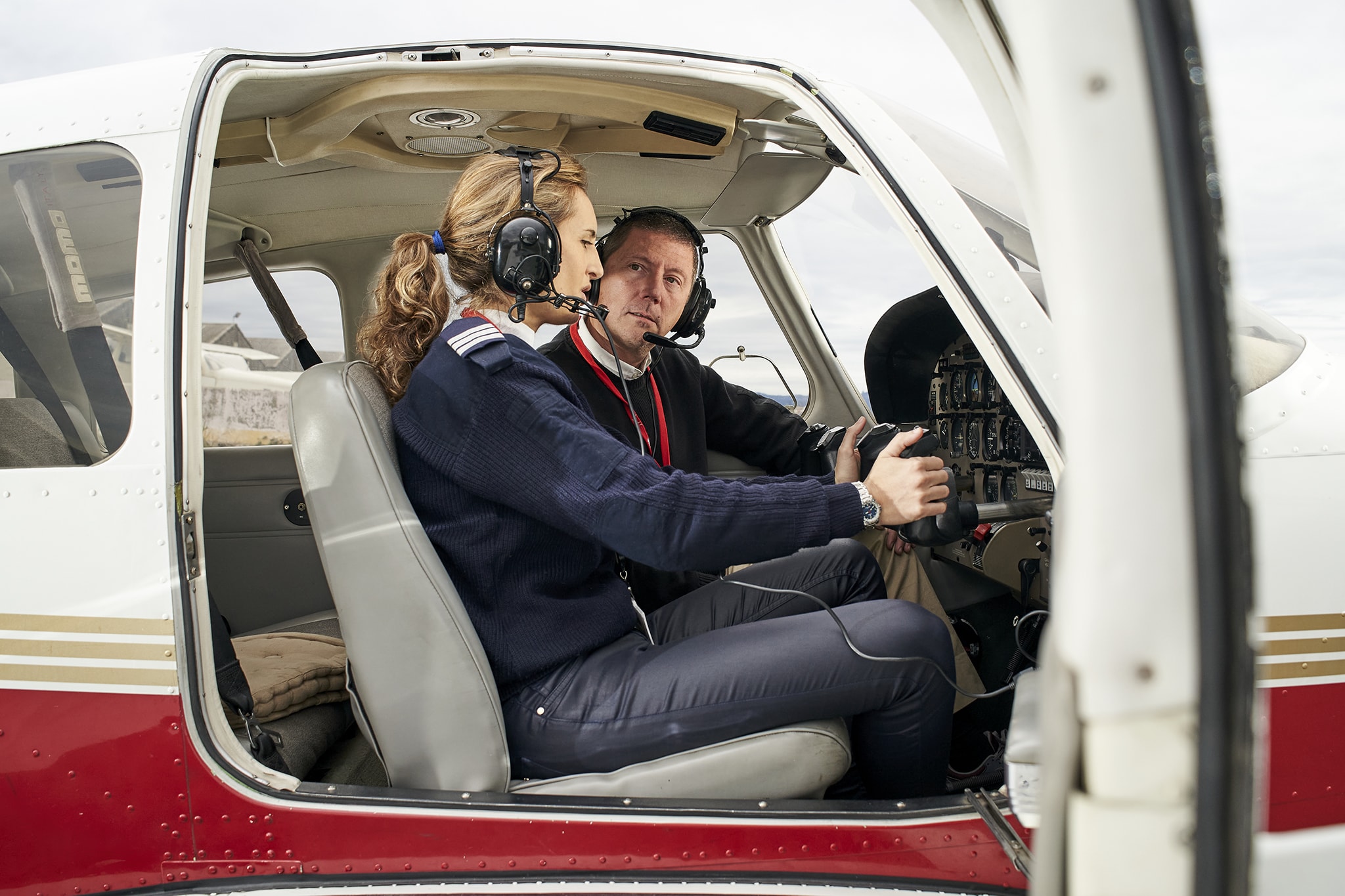
Before diving into the FAQ section, consider kickstarting your aviation journey with Flight Nerd Air Force. Our online ground school courses offer flexibility and comprehensive coverage of essential topics like airport operations, aeronautical decision-making, radio communications, basic aerodynamics, and weather theory.
By choosing Flight Nerd Air Force, students gain access to a modern, student-focused curriculum designed to complement hands-on training with certified instructors, making it easier to transition smoothly into in-air practice.
Frequently Asked Questions
Can I get a PPL in 3 months?
Yes, you can obtain a Private Pilot License (PPL) in as little as 3 months by enrolling in a full-time flight training program.
However, part-time schedules may extend the timeline to 3-6 months, depending on how quickly you can complete the required tests.
What is a discovery flight, and why is it important?
A discovery flight is an introductory lesson that allows you to experience piloting an aircraft.
It is crucial for determining if you want to pursue flying and train to become a pilot before investing in a full training program.
How much does it cost to obtain a private pilot license?
Acquiring a private pilot license costs between $8,000 and $15,000. This amount is determined by the number of hours spent in both flight and on the ground, as well as charges for renting aircraft and how often an individual undertakes personal training.
To keep costs under control, it’s advisable to include simulator time and online courses in your regimen and maintain regularity in your flying schedule during training.
What should I bring to my first private flying lesson?
For your first private flying lesson, it’s essential to wear comfortable clothing and bring a valid government-issued ID, like a passport or driver’s license.
Arriving with an open mind and a willingness to learn will set you up for success, especially as you prepare for the practical exam.
How do certified flight instructors contribute to my training?
Certified flight instructors are essential in your training, as they deliver essential theoretical knowledge and practical skills, create structured lesson plans, evaluate your performance, and foster a strong safety culture.
Their guidance ensures you become a competent and safe pilot, well-prepared for the FAA exams.
